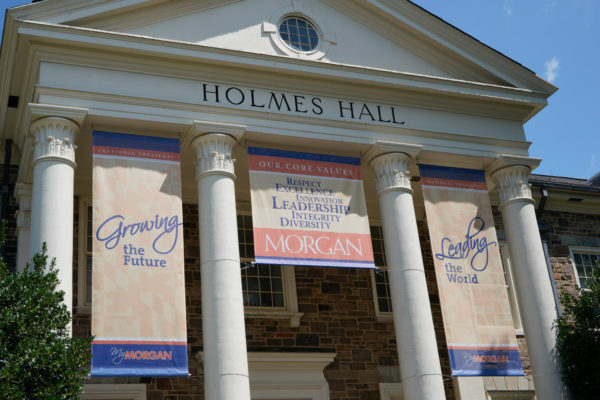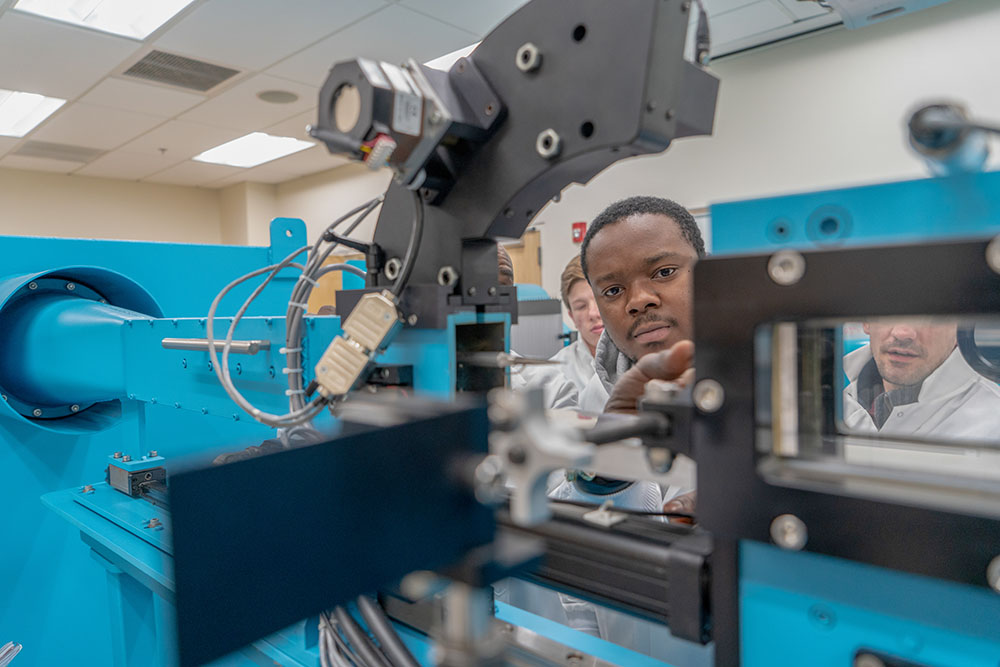What separates the run-of-the-mill research institutions from the world’s top research universities? The answer: R1 status, which can mark a difference of a billion dollars in grants and federal funding.
R1 status comes from the Carnegie Classification of Institutions of Higher Education, which classifies schools based on a variety of characteristics like doctoral degrees conferred and research spending. In the state of Maryland, only three schools fit that designation: Johns Hopkins University, the University of Maryland, College Park and this year’s recent addition, the University of Maryland, Baltimore County (UMBC). Only 3.7% of the nearly 4,000 US colleges and universities that get classified by this system are R1 — in other words, that’s 146 schools considered the best research institutions in the world.
At present, none of these are historically Black colleges or universities (HBCUs); DC’s private Howard University had that designation under prior designations, but phased out of it in the mid-00s.
Baltimore’s own public Morgan State University is one of the many HBCUs seeking to change that.
“It’s so important for Morgan to be a resident on the penthouse level of research because there’s no other institution—no other HBCU—on that floor like us, and we’re moving boldly towards reaching the higher echelon of Carnegie Classified universities,” said David Kwabena Wilson, president of Morgan State, in a prepared email statement. “Attaining R1 (‘very high research’) classification is a lofty goal for Morgan, but we are primed for the challenge, understanding that attaining R1 will not only raise our profile within the research and scientific community but also help to ensure Morgan students have access to the expertise, facilities and curricula to prepare them for an increasingly competitive marketplace.”
What does R1 status actually mean?
These are the main criteria for R1 schools to fulfill:
- Award at least 20 research/scholarship doctoral degrees during the update year, which takes place every three years and
- Spend at least $5 million in total research expenditures, as reported through the National Science Foundation’s Higher Education Research & Development Survey
- Score high on the Research Activity Index calculation, which is an aggregate level of overall and per capita research activity. The calculation takes research spending and research hiring measures before dividing it by the number of full-time assistant, associate and full professors.
R1 designation matters in part because it makes universities more attractive to federal and state funding. Johns Hopkins received $722,890,586 through 1,339 awards from the National Institutes of Health in 2020. These are the kinds of dollars HBCUs are missing out on.
In its mission to reach the R1 level, Morgan State has created the National Center for Equitable Artificial Intelligence and Machine Learning Systems, which began operating last month. The university also invested $20.1 million to start designing an $150 million-dollar science center and is competing to land a $120 million Department of Defense (DoD)-affiliated research center.
If Morgan State wins the $150 million in state funds that it seeks to support this center, the result could be somethinakin to the Johns Hopkins University Applied Physics Lab, which in 2020 brought in$1.85 billion in revenue from contracts and grants.
-

Holmes Hall at Morgan State University. (Image via Facebook)
Wilson described the center as the university’s “North Star.”
“It underpins Morgan’s 10-year strategic plan and our campus’ full commitment to providing upward social and economic mobility for our students,” the president added. “It is quintessential that we are preparing Morgan graduates for the work of the future and the future of work. We are intentional about achieving R1 classification and this intentionality is rooted in investing wisely in ourselves.”
Morgan State will also be using money from its share of the $577 million settlement that the State of Maryland owes its four HBCUs — the culmination of a historic 15-year lawsuit that accused the state of providing inequitable resources to those institutions — to hire 14 professors for the aforementioned AI and machine learning center.
These efforts complement others to boost STEM at Morgan State, including developing a for-profit osteopathic medical school and participating in Amazon’s Career Choice Program. The school is also leveraging connections to NASA in a planned multi-school earth sciences center, a summer internship program and a special academy for K-12 youth — all of which aim to tackle associated fields’ DEI issues.
So, what does R1 status mean for students?
Maryland Higher Education Secretary Dr. James D. Fielder sees this striving toward R1 status as a chance to create more equity in STEM fields.
“The R1 distinction recognizes the strength and quality of the institution’s research programs, and the diversity perspective of these programs are critical to promoting positive change for our state’s workforce and our robust economy,” Fielder told Technical.ly. “The distinction would also allow Maryland’s HBCUs to further engage with industry, and to increase student diversity within STEM education programs, which is an integral part of the Maryland Higher Education Commission’s four-year State Plan.”
Although R1 certification is considered a gold standard among universities and a marker of a school’s quality, it doesn’t necessarily mean that the university is a great institution for its students. The Carnegie Foundation and Indiana University’s Center for Postsecondary Research, which created the latest Carnegie Classifications together, aren’t judging these schools on retention and attrition rates. A professor that produces great research isn’t inherently a great teacher, and vice versa.
Dr. Willie E. May, Morgan State’s vice president for research and economic development explained that becoming a top-tier institution in the next five-to-seven years is about more than just STEM programs and research centers. It instead requires a holistic, multidisciplinary improvement of the school’s research capacity.
“Let’s face it. It’s a merit badge,” May told Technical.ly. “We’ll proudly wear that merit badge, but as I was trying to make a point: What we have to do is make sure that we continue to serve our community and prepare students to be successful in their careers, in life — and prepare them to support this country in our global competitiveness.”
Morgan State’s 10-year strategic plan sets a target of 2030 for the school to reach R1 status. May believes the university is on track to reach it by 2027. He added that the university, if it succeeds in this plan, will strive to support the surrounding community by being Maryland’s preeminent public urban research university. Maybe, like the University of Baltimore does through the Baltimore Neighborhood Indicators Alliance, Morgan State can better use its research and data to help empower local neighborhoods as they push legislators and politicians to enact positive change.
“We’re not going to try to be Hopkins, College Park or UMBC,” May said. We’re going to focus an increasing amount of our research on addressing problems of the urban condition.”







